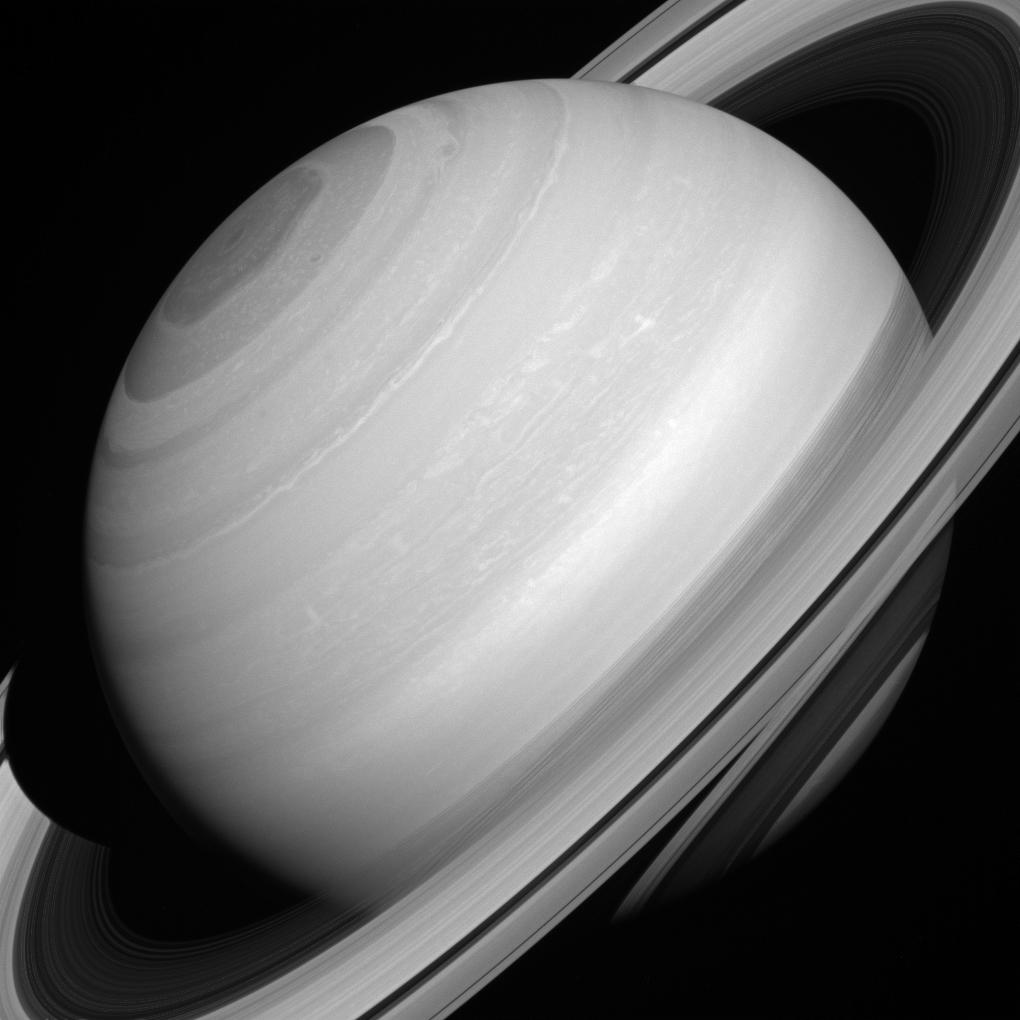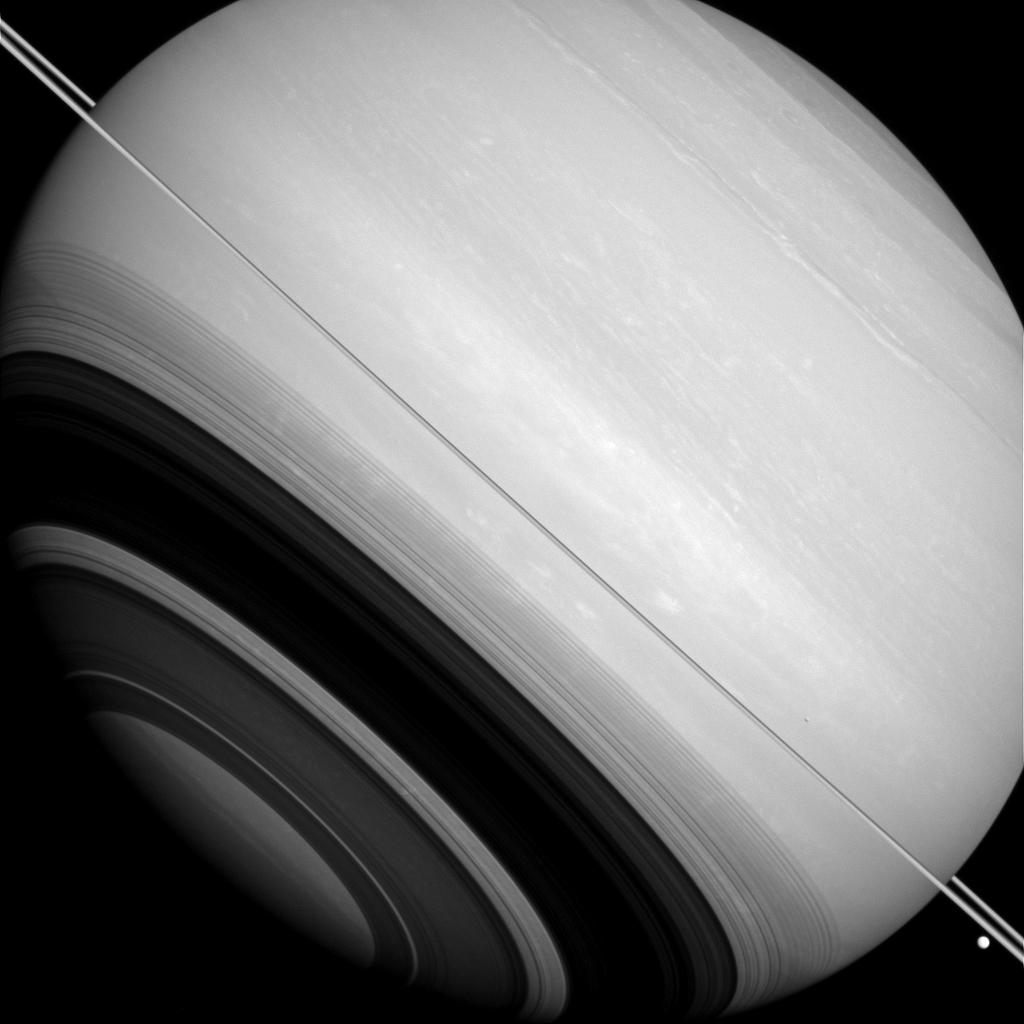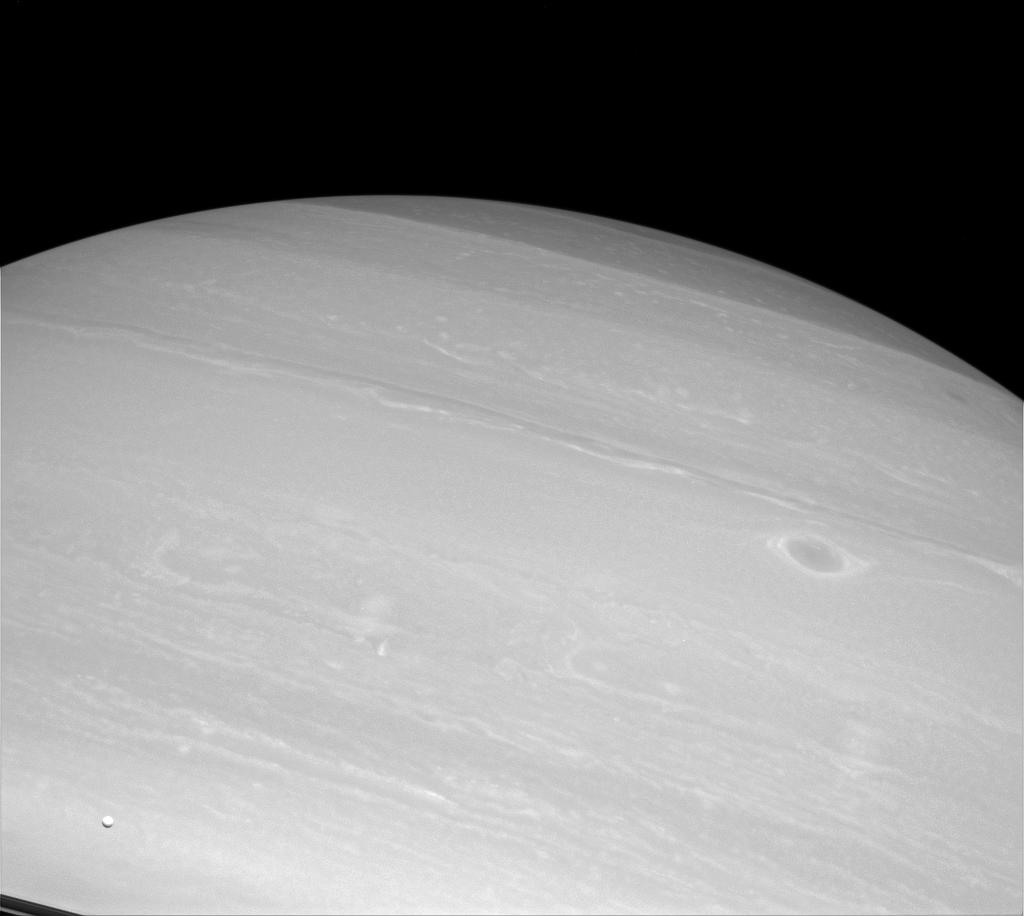Saturn's Rings Caught Streaking in NASA Photos

The streaky details of Saturn's rings have been captured in amazing detail in new images from NASA's Cassini spacecraft.
In many portraits of Saturn, the planet's rings appear to be a solid disk of material. In reality, the rings are made up of chunks of rock and ice, varying in size from grains of dust to small mountains. In the latest amazing image from Cassini, these granular ribbons of material can be seen circling the planet, like grooves in a vinyl record.
Cassini captured this latest view of Saturn from a distance of 1.4 million miles (2.3 million kilometers) on Aug. 12. However, NASA released the image on Dec. 8.
There are multiple sections to Saturn's rings, which are named with letters A through G. The shadow of the A and C rings can be seen projected onto the body of Saturn in the lower right corner.

In a second photo from the Cassini spacecraft, released last month, the shadow of the rings takes center stage. The variation in light passing through the rings highlights that the rings are not entirely opaque. (The moon Tethys can be seen in the bottom right corner below the ring plane. Mimas can be seen just above the ring plane at about 4 o'clock). The image was taken 1.1 million miles (1.7 million km) from Saturn.
For much of history, astronomers were puzzled as to how the rings could steadily orbit Saturn without breaking apart or drifting away from the planet. In 1857, physicist James Clerk Maxwell demonstrated that the rings of Saturn must be made up of smaller chunks of material that orbit together. In the 1970's, astronomers showed that the rings are mostly made up of water ice, and in the 1980's, the Voyager probes provided the first up-close images of the rings' structure. Scientists believe Saturn's rings (and its moons) are at least 4 billion years old, and thus contain remnants of the early solar system.
The relative density of material in the ring plane makes the rings appear solid from far away. Saturn's rings extend 170,000 miles wide (273,600 km), but only 30 (10 meters) thick.
Get the Space.com Newsletter
Breaking space news, the latest updates on rocket launches, skywatching events and more!

Saturn's enormous size is captured in a portrait of the gas giant with one of its small moons, Enceladus, which is only 313 miles (504 km) wide. The miniature moon stirred up excitement among astronomers when Cassini identified vapor jets coming from its south pole. The jets could indicate a water reservoir under the surface of the small satellite.
This photo, released by NASA on Dec. 1, also includes a prominent storm on Saturn that is visible at the center right of the image.
NASA's Cassini spacecraft launched in 1997 and has been orbiting Saturn since 2004. The spacecraft is currently in an extended mission phase that runs through 2017.
Follow Calla Cofield @callacofield. Follow us @Spacedotcom, Facebook and Google+. Original article on Space.com.
Join our Space Forums to keep talking space on the latest missions, night sky and more! And if you have a news tip, correction or comment, let us know at: community@space.com.

Calla Cofield joined Space.com's crew in October 2014. She enjoys writing about black holes, exploding stars, ripples in space-time, science in comic books, and all the mysteries of the cosmos. Prior to joining Space.com Calla worked as a freelance writer, with her work appearing in APS News, Symmetry magazine, Scientific American, Nature News, Physics World, and others. From 2010 to 2014 she was a producer for The Physics Central Podcast. Previously, Calla worked at the American Museum of Natural History in New York City (hands down the best office building ever) and SLAC National Accelerator Laboratory in California. Calla studied physics at the University of Massachusetts, Amherst and is originally from Sandy, Utah. In 2018, Calla left Space.com to join NASA's Jet Propulsion Laboratory media team where she oversees astronomy, physics, exoplanets and the Cold Atom Lab mission. She has been underground at three of the largest particle accelerators in the world and would really like to know what the heck dark matter is. Contact Calla via: E-Mail – Twitter









